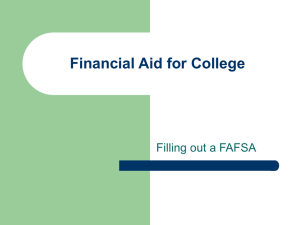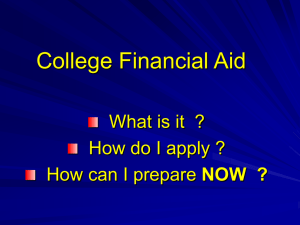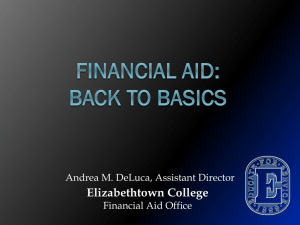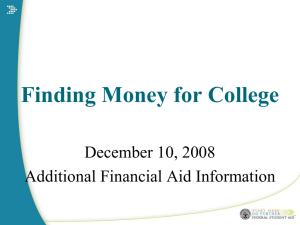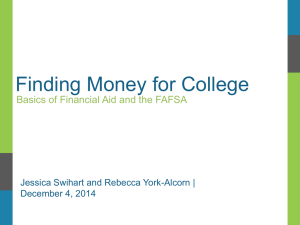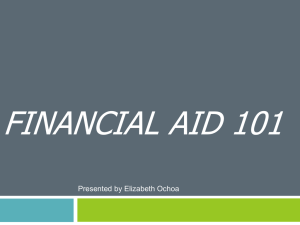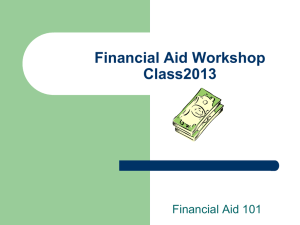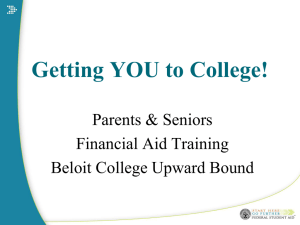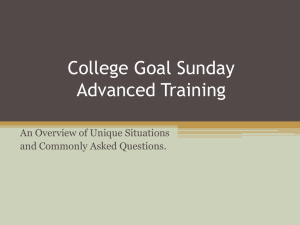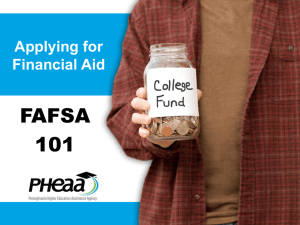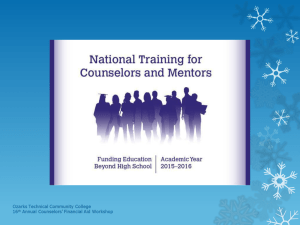2015 FAFSA presentation
advertisement
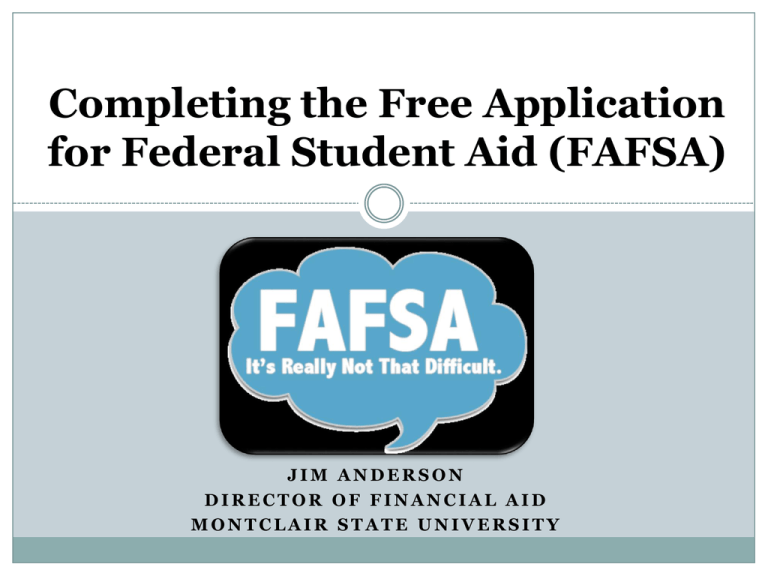
Completing the Free Application for Federal Student Aid (FAFSA) JIM ANDERSON DIRECTOR OF FINANCIAL AID MONTCLAIR STATE UNIVERSITY What We Will Cover This Evening Who Must Complete the FAFSA How and When the FAFSA Should Be Filed Using Estimated Information IRS Data Retrieval Tool Avoiding Common Errors NJ HESAA Supplemental Questions Review of the Form Who Must Complete the FAFSA All students wishing to apply for funding from Federal, State, and most often institutional financial aid programs Often required even for students offered academic merit awards Must be filed each year for each student in the family When To File Forms can be filed at any time on or after January 1st for the academic year that follows (after January 1, 2015 for the 2015-2016 academic year) Review the filing deadlines for all schools File the form by the deadline of the school with the earliest deadline Meet state program deadlines (June 1 for renewal applications) Using Estimated Information If you must file prior to completing taxes, use care to estimate as accurately as possible Use prior year tax return as a guide along with last pay stub or W2s Estimated Award Letters/Award Adjustments Verification – Federal, State, Institutional IRS Data Retrieval Tool Should utilize if available Can be used if return was filed electronically one to two weeks prior or if filed manually, six to eight weeks prior Cannot be used if: • • • • Married Filing Separately Married, Filed Head of Household If an amended return has been filed If a Puerto Rican or foreign return was filed IRS Data Retrieval Tool Benefits of using – Verification You can update the FAFSA after initial filing Avoiding Common Errors Reporting parent information in the student section Listing parental marital status incorrectly Listing incorrect Social Security Number or driver’s license number Reporting wrong date of birth Not using correct legal names First and last names in the wrong places Transposing digits or letters Using commas or decimal points, adding zeros Avoiding Common Errors Entering the incorrect address (permanent, home address should be listed) Reporting wrong income tax paid Incorrectly claiming head of household (if student or parent filed tax returns with wrong filing status, they will have to file amended return before receiving federal aid) Misreporting assets Failing to sign the FAFSA Filing the wrong year’s FAFSA Forgetting to list colleges NJ HESAA (Higher Education Student Assistance Authority) Supplemental Questions Link is provided at the end of the FAFSA process, easy to miss What if you miss it? Tuition Aid Grant (TAG) Program • • Available only if you attend a NJ school List a NJ School first on the FAFSA Review of the Form www.fafsa.ed.gov NOT www.fafsa.com www.pin.ed.gov Process changing in April Resources - Links To apply for a PIN: http://www.pin.ed.gov/PINWebApp/appinstr.jsp To file the FAFSA on-line: http://www.fafsa.ed.gov/ To calculate your EFC: https://bigfuture.collegeboard.org/pay-for-college/paying-your-share/expected-familycontribution-calculator# EFC Formula http://ifap.ed.gov/efcformulaguide/attachments/090214EFCFormulaGuide1516.pdf FAFSA on the Web Worksheet https://fafsa.ed.gov/fotw1516/pdf/fafsaws15c.pdf Filing the FAFSA Guide https://www.edvisors.com/fafsa/book/direct/ Questions?????
